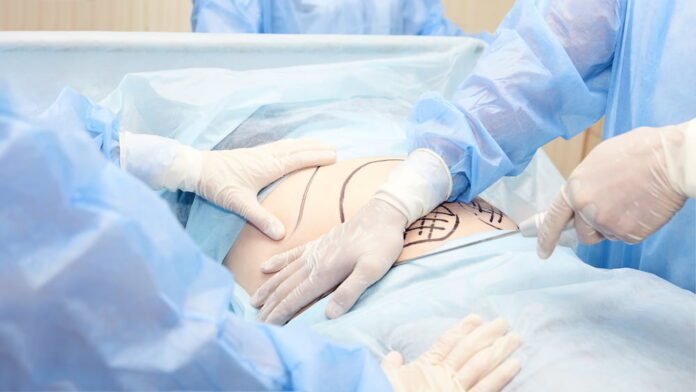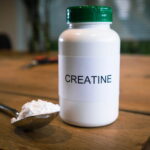Liposuction, a widely known cosmetic procedure, has gained immense popularity recently as a solution for removing stubborn fat deposits and achieving a more sculpted physique. Whether you’re considering liposuction as an option or simply curious about this procedure, understanding its ins and outs can help you make an informed decision and ensure your safety throughout the journey.
Liposuction is often favored by individuals who struggle with persistent fat pockets unresponsive to diet and exercise, giving them a more contoured appearance and boosting their self-confidence.
While liposuction offers enticing benefits, knowing the potential risks and complications associated with the procedure is crucial. Prospective patients must consult with a qualified plastic surgeon and liposuction doctor, thoroughly discuss their medical history and expectations, and weigh the potential risks against the desired outcomes before proceeding with the surgery.
This article aims to delve into the intricacies of liposuction, shedding light on the process, its potential benefits, and the associated risks.
The Liposuction Process
The liposuction process begins with a comprehensive consultation, during which the surgeon carefully assesses the patient’s medical history, discusses their treatment goals, and thoroughly explains the potential risks and benefits involved.
During the procedure, the surgeon creates small incisions near the targeted areas and inserts a cannula connected to a suction device. Using precise movements, the surgeon skillfully manipulates the cannula in a back-and-forth motion, effectively fragmenting and removing excess fat cells while shaping the desired contours of the body.
It’s important to note that liposuction is not intended for weight loss but rather for body contouring purposes. The amount of fat removed is determined based on the patient’s goals and the surgeon’s professional judgment, ensuring optimal aesthetic outcomes.
Following the procedure, the incisions are carefully closed, and the treated areas are dressed or covered with compression garments. These garments reduce swelling, aid in healing, and provide the necessary support. While bruising, swelling, and discomfort are to be expected initially, these effects gradually diminish over time.
To ensure proper healing and to achieve the best results, patients must adhere to the post-operative instructions provided by the surgeon. Recovery time can vary, but most individuals can typically resume work within a few days to a week, with the recommendation to avoid strenuous activities for a few weeks to allow the body to recover fully.
The Benefits
Elimination Of Stubborn Fat
One of the primary benefits of liposuction is its ability to target and remove stubborn fat cells unresponsive to traditional diet and exercise. No matter how diligently one adheres to a healthy lifestyle, certain body areas may retain pockets of fat. Liposuction can effectively address these areas, such as the abdomen, thighs, hips, arms, or neck, providing a more balanced and proportionate physique.
Enhanced Body Contour
Liposuction can help individuals achieve a more sculpted and defined body contour by removing excess fat in specific regions. Whether it’s achieving a flatter abdomen, slimmer thighs, or a more streamlined waistline, liposuction can contribute to an improved overall aesthetic.
Boost In Self-Confidence
The impact of liposuction extends beyond physical changes. For many individuals, stubborn fat deposits can cause self-consciousness and affect self-esteem. Feeling more comfortable and satisfied with one’s appearance can positively impact various aspects of life, from personal relationships to professional endeavors.
Motivation For A Healthy Lifestyle
Liposuction serves as a motivation for individuals to adopt and maintain a healthy lifestyle. Patients who undergo liposuction often consciously try to sustain their results by incorporating regular exercise and a nutritious diet into their daily routines. Knowing the effort and investment that went into achieving their desired body shape encourages them to prioritize their overall well-being, leading to long-term health benefits.
The Potential Risks
Infection
Like any surgical procedure, liposuction carries the risk of infection. Small incisions are made during liposuction, providing an entry point for bacteria. Infections can cause redness, swelling, and tenderness and may require antibiotics or additional medical intervention. Following post-operative care instructions is non-negotiable, like keeping the incisions clean and promptly reporting any signs of infection to your surgeon.
Bleeding And Hematoma
While minor bleeding is expected during the procedure, excessive bleeding or the formation of a hematoma (a localized collection of blood) can occur. This risk can be minimized by following the surgeon’s pre-operative guidelines, avoiding certain medications that can increase bleeding risk, and closely monitoring the incision sites during the recovery period.
Adverse Reaction To Anesthesia
Liposuction may be performed under general anesthesia or local anesthesia with sedation. Each form of anesthesia entails its own set of risks. Adverse reactions to anesthesia include complications such as allergic reactions, respiratory problems, or negative drug interactions.
To minimize this risk, before the procedure, the anesthesiologist will thoroughly evaluate your medical history and assess any potential risks to ensure your safety during anesthesia.
The Bottom Line
Liposuction is a transformative procedure for individuals seeking to eliminate stubborn fat deposits and achieve their desired body contour. While it offers numerous benefits, it’s wise to approach liposuction with a thorough understanding of the process and the potential risks involved.
Individuals can make informed decisions and ensure their safety throughout the journey by consulting with a qualified plastic surgeon, discussing expectations and concerns, and carefully weighing the benefits against the potential risks. Remember, the key to a successful liposuction experience lies in education, open communication, and prioritizing your well-being every step of the way.
Read Also
- Why the Keto Diet Works for Some People—and Fails Dramatically for Others: An Ayurvedic Breakdown for Modern HealthcareThe keto diet has dominated weight-loss culture for years. For some people, it produces rapid fat loss, stable energy, and improved mental clarity. For others—especially those who gain weight easily—it leads to burnout, digestive distress, rebound weight gain, high cholesterol, and a metabolism that feels slower than before. Healthcare often frames this as a discipline… Read more: Why the Keto Diet Works for Some People—and Fails Dramatically for Others: An Ayurvedic Breakdown for Modern Healthcare
- How to Choose the Best Assisted Living Facility for SeniorsAre you looking for the right assisted living facility for a senior loved one? Choosing a place can feel overwhelming. There are many factors to consider, from care services to the environment. Safety, comfort, and social opportunities play important roles in daily life. Each senior has unique needs and preferences that must be met. Understanding… Read more: How to Choose the Best Assisted Living Facility for Seniors
- Burn Smart, Not Hard; Shape Burn: Clean Protein for Weight ManagementYou want to feel light, strong, and confident. You don’t want crash diets or fake promises. You need a plan that works with your body, not against it. That’s where Shape Burn comes in. You can burn fat without losing strength. You can eat better and stay full. You can manage weight in a way… Read more: Burn Smart, Not Hard; Shape Burn: Clean Protein for Weight Management
- Creatine Basics: How Much Is 5g, How Much Water You Need, and Whether Pills or Powder Work BetterIf you’ve ever walked into a supplement aisle or scrolled through fitness TikTok, you’ve probably seen people talking about creatine — usually with a shaker bottle in hand and promises of better workouts and faster gains. And honestly? They’re not wrong. Creatine is one of the most researched and effective supplements for muscle strength, recovery,… Read more: Creatine Basics: How Much Is 5g, How Much Water You Need, and Whether Pills or Powder Work Better
- Understanding Breast Cancer in Men: Key Facts and SymptomsBreast cancer is often thought of as a disease that only affects women. However, men can develop it too. Although it is less common, early detection and awareness are important. Read on to learn key facts, symptoms, and ways men can take action to protect their health. How Common Is Breast Cancer in Men? Breast… Read more: Understanding Breast Cancer in Men: Key Facts and Symptoms






